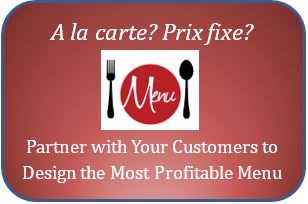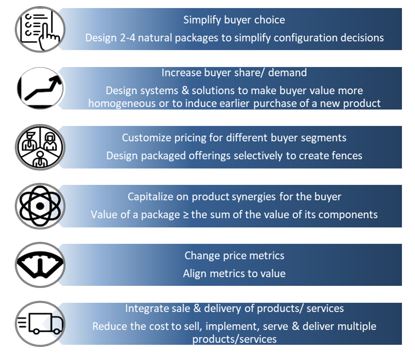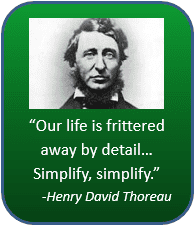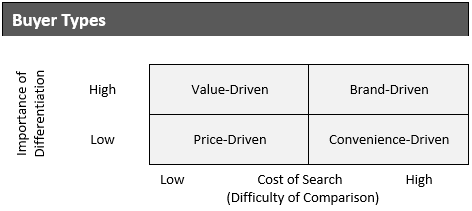Picture a company with a number of complex products. They have long provided the services to ensure their products’ effective implementation. These products are used in specific applications: surgery, agriculture, animal health, food production, lab testing, construction, installation in other equipment, or manufacturing. The company faces a number of competitors. Fortunately, the company has the market position and the capital to invest in R & D. They lead their overall market in innovation. Their engineers and product development team has designed a truly disruptive technology that requires customers to invest in a product and also requires ancillary services. This technology will change the way that their customers operate. Having tested their approach, they prepare for launch, pulling together product information and their testing experience with beta customers.
 Unfortunately, buying and implementing their new offering is complicated. Potential customers have limited capital and bandwidth to consider switching.
Unfortunately, buying and implementing their new offering is complicated. Potential customers have limited capital and bandwidth to consider switching.
This situation, and variations on it, are widespread in B2B. As highlighted in our last blog, the explosive growth of innovative services has accompanied ever-increasing complexity in product offerings and buying processes. At some point, many businesses are compelled to consider whether their ground-breaking development work is lost on their customers. To tackle this problem, the best commercial organizations design and launch “packaged” or “bundled” systems and solutions. Prix fixe offerings can improve the performance of a business whose a la carte offerings have gotten complicated, but only if those prix fixe offerings are well-designed.
 Great Offer Design and Customer Value. Quantifying value and communicating value are essential in designing differentiated B2B product and service packages. In this blog series we use specific examples to show how customer value and good value propositions improve the design of effective go-to-market strategies. In part 1 of the series, we provided broader context for designing packaged offerings, reviewed three mistaken approaches to bundling, and introduced the following six good reasons to package systems and solutions:
Great Offer Design and Customer Value. Quantifying value and communicating value are essential in designing differentiated B2B product and service packages. In this blog series we use specific examples to show how customer value and good value propositions improve the design of effective go-to-market strategies. In part 1 of the series, we provided broader context for designing packaged offerings, reviewed three mistaken approaches to bundling, and introduced the following six good reasons to package systems and solutions:
 Simplify buyer choice. Packaged offerings make it easier for buyers to choose an effective combination of products and services.
Simplify buyer choice. Packaged offerings make it easier for buyers to choose an effective combination of products and services.- Increase buyer demand. A packaged solution can represent an additional alternative for customer choice, potentially at a discount, becoming a way to increase demand.
- Customize pricing for specific buyer segments. Providing combination packages that apply only to specific segments supports different pricing across those specific, value-based segments.
- Capitalize on product/service buyer synergies. Packages of differentiated products and services frequently deliver more value to customers when purchased in combination than the sum of their a la carte value when purchased individually.
- Improve price metrics. A packaged system or solution often provides a way to change the price metric previously used for products or services to a metric more aligned with customer value.
- Integrate sale & delivery of products and services. Combining products and services into a package frequently has direct implications for how they are sold and delivered, reducing the cost to acquire, retain and serve customers.
These six reasons are not mutually exclusive, but they do have different implications. In this second installment in the blog series, we explore the first two of these six reasons in greater depth as we focus on the offer design, pricing, and communication implications of simplifying buyer choice and increasing demand using packaged solutions.
1. Simplify Buyer Choice with Packaged Solutions

 Packages to Keep It Simple. Making decisions easier for buyers is common sense. Like prix fixe meals with wine pairings, packaged solutions drive buyers toward recommended combinations that take the pressure off a buyer decision-maker to investigate which products go best with which services. Simplifying solution configuration decisions should make it easier for a buyer to buy.
Packages to Keep It Simple. Making decisions easier for buyers is common sense. Like prix fixe meals with wine pairings, packaged solutions drive buyers toward recommended combinations that take the pressure off a buyer decision-maker to investigate which products go best with which services. Simplifying solution configuration decisions should make it easier for a buyer to buy.
Packages to Reduce Buyer Risk. If recommended solutions are based on how they have made other customers successful, and if the sales team builds buyer trust pre-sale, packaged solutions also de-risk the decision for a buyer sponsor. In the absence of a tried and true package, a buyer, faced with many possible la carte combinations, takes added responsibility for their choice of items on the menu. They might choose a combination that will not deliver a successful implementation. A packaged combination proven to be successful reduces risk for the buyer. It may also implicitly transfer some accountability for that choice to the seller. If things go wrong because the prix fixe selection was the wrong combination, sellers often end up delivering additional services or products to make good on outcomes the buyer anticipated. Recommended packages sometimes transfer risk.
Structured Packages to Satisfy Buyer Shopping Requirements. Packages are also structured to fulfill different buyer needs or to fit value-based segments. Some simple packaging structures help to satisfy buyer budget or process requirements. Silver, gold and platinum alternatives are sometimes priced in a way that sticker shock for the platinum alternative makes it easier for a buyer to decide that the gold selection is reasonably priced. In this case, an overpriced platinum alternative is unlikely to be selected but instead helps adjust pricing perceptions upwards, making the price of the gold selection more palatable.
Packages and Buyer Search Cost. Eliminating the need for line-by-line configuration decisions by offering packages is measurably and economically beneficial for many B2B buyers. But not all buyers are the same. Some buyers, for whom a purchase decision is important, who are knowledgeable already, or who come from organizations with procurement infrastructure, may prefer to make deliberate configuration choices from the a la carte menu. As highlighted in the
 Buyer Types[1] table to the left, a lower cost of search may support greater interest in the a la carte menu, regardless of whether a buyer is attuned to differentiation or not.
Buyer Types[1] table to the left, a lower cost of search may support greater interest in the a la carte menu, regardless of whether a buyer is attuned to differentiation or not.
Brand-Driven and Convenience-Driven buyers are more likely to buy simple packages because their search cost is high. Value-Driven and Price-Driven buyers are more likely to seek transparency for individual price components as they customize a solution to their specific situation and interests. Given their cost of search, studying specific prices from the a la carte menu may also be an element of their price negotiation strategy.
 Case Study #1: Apollonia Technologies – A Better Dental Implant Experience
Case Study #1: Apollonia Technologies – A Better Dental Implant Experience
Situation: Apollonia Technologies offers state-of-the-art visual imaging technology to dentists. Their traditional offerings have consisted of: (1) imaging equipment, (2) visualization devices, (3) software and (4) education services. Their current offering and price list is extensive.
New Product in Launch. Apollonia has pioneered Instimplant, a 3-d printing technology, together with new implant materials, that are compatible with recent models of its existing equipment and its software. If deployed in a dental facility, the new technology enables in-service 3-d printing of permanent dental implants, reducing requirements for temporary implants and extra patient visits to reach a permanent solution.
Packaged Solutions.
- For current customers who have up-to-date imaging equipment and software, they offer a package consisting of Instimplant, new materials for 50, 200, or 500 patients, together with a training program to cover the new technology.
- For current customers who have older imaging equipment and out-of-date software, they offer a package consisting of a software and equipment upgrade, Instimplant, new materials for 50, 200, or 500 patients, together with an enhanced training program to cover both the system upgrade and the new technology.
- For new customers, Apollonia offers a package consisting of a complete system with imaging equipment, visualization devices, software, Instimplant, new materials for 50, 200, or 500 patients and an enhanced training program.
A la Carte Offerings and Pricing. Apollonia continues to provide a la carte prices on request, although they feature the three packaged solutions with package pricing. They have not identified any significant cost or value differences between customers who only consider package pricing and those looking at detailed a la carte prices, so they charge the same prices and set similar pricing policies for both groups of buyers.
Communication and Sales. Apollonia’s primary online and printed product information focuses on the benefits of the packaged solutions. They have three brochures that correspond with the customer types for each of the three packages. They train their direct sales reps and their distribution partners primarily on the three packaged solutions, providing easy-to-use tools for buyers looking for custom configurations of products and services.
Implications for Offer Design and Pricing. Simplicity is often the first reason that organizations package their solutions. It frequently accompanies reductions in the cost to acquire and deliver products and services (our sixth reason to package, to be discussed in part 4 of this series). On its own, however, and in the absence of other reasons to package, simplicity as a packaging driver:
- Starts off neutral for the pricing of packages in comparison to the prices of their a la carte components. If anything, a higher cost of search associated with likely package buyers suggests discounting for packages relative to a la carte pricing.
- Should not drive an organization to withdraw or eliminate a la carte pricing. After all, low cost of search buyer types (Value-Driven and Price-Driven) will probably want to see price breakouts and a la carte prices. Making offerings simpler for Brand-Driven and Convenience-Driven Buyers is not a reason to generate distrust among other buyers or to alienate them. When both packaged solutions and a la carte prices are offered, this is a case of what economists call “mixed bundling.”
Implications for Value Communication. Simplicity, as a reason to package, is a communication strategy. Invariably, simple offering packages are deployed together with good value communication as part of any marketing strategy and as part of most sales approaches early in the sales cycle. If detailed custom configurations, that depart from packages, arise for specific customers, this is usually handled in the middle of the sales cycle or later, as buyers evaluate or negotiate purchases. Initial communication of value, and value relative to price, is invariably focused on the packages.
2. Increase Buyer Demand

 Common Sense: Packages to Increase Demand. Discounting for volume is a standard approach to promoting individual products in B2C. The large, economy size of a consumer product on the shelf is consistently priced lower per kg or per gallon. Our introductory microeconomics courses taught us not only that market demand curves slope downwards, but also that individual demand curves slope downwards. Drop the price per unit and sell more.
Common Sense: Packages to Increase Demand. Discounting for volume is a standard approach to promoting individual products in B2C. The large, economy size of a consumer product on the shelf is consistently priced lower per kg or per gallon. Our introductory microeconomics courses taught us not only that market demand curves slope downwards, but also that individual demand curves slope downwards. Drop the price per unit and sell more.
It is natural to extend this thought process to B2B and to multiproduct systems and solutions. A combination of products and services, packaged together at a lower price than the sum of component prices, is a widely used approach to increase demand across a product portfolio. The rationale is analogous to B2C and is expressed in a variety of ways: share of wallet, mind share, brand loyalty, focused sourcing, strategic partnerships, and brand ranking. We see it in a number of industries including hospital supplies, testing instruments, industrial equipment, and manufacturing contracts. The package becomes a supplemental choice that the customer can consider in addition to considering a la carte items. Offering a package at a discount is one way to invite a customer for one product or service to try another product or service. Offering a package at a discount also incentivizes a customer for one product to focus their multivendor purchasing strategy on fewer suppliers.
Theory: Packages to Address Heterogeneous Audiences & Dispersed Valuation. Economic theorists[2] have long considered packages and bundles, compared to products sold a la carte, with an eye on antitrust policy. As a matter of general interest, they are looking for comparisons between: (a) “pure bundling” (where products are only sold in packages), with (b) “unbundling” (where products are only sold a la carte), with (c) “mixed bundling” (where both packages and a la carte offerings are sold). The economic literature deploys a lot of math, analyzing a market as a collection of individuals where there is a probability distribution of the prices they are willing to pay (or their valuations), at a point in time, or in some analyses, over time. These analyses usually apply both to B2C and to B2B.
Without dwelling on the math, some of the general themes can be intuitively and approximately summarized as follows:
- Bundles or packages represent buyer choices that are distinct from the a la carte offerings they combine.
- When there is variation or dispersion in buyer valuations for individual products, that dispersion is often reduced when buyers consider combinations or packages.
- Packages offered at a discount to a la carte prices are a means to address some buyers who would buy no products, or only a subset of products, a la carte.
- The effect of increasing demand can also apply through time, where buyers purchase some products earlier than they would otherwise if those products are offered as a package.
Although the economics literature tends to be dense, its arguments and its results are not that far from the common sense arguments. Without necessarily identifying specific segments, these analyses suggest that packages increase demand.
But the economic analysis is generally neither intuitive nor helpful when it comes to understanding or specifically identifying B2B segments. In the economics literature, the implicit segmentation addressed by packages relates to the probability distributions of valuations for the products, where standard deviations and correlation coefficients tend to drive the relative importance of packages and, therefore, the package discounts that are appropriate. For example, discounted packages may be a way to drive increased demand, especially from individuals who have negatively correlated valuations of the products in the package.
If a business is willing to relegate its commercialization strategy to pure statistical analysis, it may be able to set up better packages and better prices, but those packages won’t necessarily prescribe a simple, targeted communication strategy nor will it help sales identify the right packages for specific customers.
 Case Study #2: Apollonia Technologies – Packages to Drive Early Adoption Situation:
Case Study #2: Apollonia Technologies – Packages to Drive Early Adoption Situation:
Situation: Apollonia Technologies offers state-of-the-art visual imaging technology to dentists. Their traditional offerings have consisted of: (1) imaging equipment, (2) visualization devices, (3) software and (4) education services. Their current offering and price list is extensive.
New Product in Launch. Apollonia has pioneered Instimplant, a 3-d printing technology, together with new implant materials, that are compatible with recent models of its existing equipment and its software. If deployed in a dental facility, the new technology enables in-service 3-d printing of permanent dental implants, reducing requirements for temporary implants and extra patient visits to reach a permanent solution.
Packaged Solutions.
- For current customers who have up-to-date imaging equipment and software, they offer a package consisting of Instimplant, new materials for 50, 200, or 500 patients, together with a training program to cover the new technology.
- For current customers who have older imaging equipment and out-of-date software, they offer a package consisting of a software and equipment upgrade, Instimplant, new materials for 50, 200, or 500 patients, together with an enhanced training program to cover both the system upgrade and the new technology.
- For new customers, Apollonia offers a package consisting of a complete system with imaging equipment, visualization devices, software, Instimplant, new materials for 50, 200, or 500 patients and an enhanced training program.
A la Carte Offerings and Pricing. Apollonia continues to provide a la carte prices on request, although they feature the three packaged solutions with package pricing. They have not identified any significant cost or value differences between customers who only consider package pricing and those looking at detailed a la carte prices, so they charge the same prices and set similar pricing policies for both groups of buyers.
Communication and Sales. Apollonia’s primary online and printed product information focuses on the benefits of the packaged solutions. They have three brochures that correspond with the customer types for each of the three packages. They train their direct sales reps and their distribution partners primarily on the three packaged solutions, providing easy-to-use tools for buyers looking for custom configurations of products and services.
Implications for Offer Design and Pricing. Using discounted packages or loyalty programs to increase demand is practiced extensively in B2B. On its own, however, and in the absence of other reasons to package, increasing demand as a reason to package:
- Results in discounting for the prices of packages in comparison to the prices of their a la carte components. Getting a customer to buy other products and services or to commit a higher share of their business is part of standard give-get negotiation.
- Rarely drives an organization to eliminate a la carte pricing. The pricing structure means that per unit profitability is higher for products or services bought a la carte than for packaged solutions. Once again we have a motivation for packaging that calls for “mixed bundling.”
Implications for Value Communication. Increasing demand, as a reason to package, often drives value communication toward the most innovative offerings of a business. Marketing budgets focus on innovative and differentiated products or services. For new accounts, this is a circumstance where gateway products drive initial sales conversations and packaged solutions often come later in the sales cycle. For current customers, the most recent innovations are a primary means to expand business with an account, whether based on a stand-alone sale or a packaged sale.
Summary: Value Based Decision-Making, Pricing and Selling. This blog series highlights the ways in which understanding, quantifying and communicating value are essential in designing differentiated product and service packages. The six reasons for packaging outlined above have different implications. In practice, good offer design involves identifying which sub-list of these 6 reasons are important objectives in structuring packages. Having explored the first two of these reasons in this blog, we will explore two of these six reasons at a time in the next two blogs, continuing to use illustrative examples, before we step back to look at the larger picture for packaged solutions in the fifth installment of the series.
 Understanding value is central to good innovation and product launch disciplines. It helps to structure and price offers more effectively in designing a go-to-market strategy. Quantified value helps with good offer design by identifying segments, by looking at value by segment, by considering value synergies, and by customizing package pricing accordingly. Planning for how value will be communicated is mission critical in achieving the best results from selling value-based packaged solutions.
Understanding value is central to good innovation and product launch disciplines. It helps to structure and price offers more effectively in designing a go-to-market strategy. Quantified value helps with good offer design by identifying segments, by looking at value by segment, by considering value synergies, and by customizing package pricing accordingly. Planning for how value will be communicated is mission critical in achieving the best results from selling value-based packaged solutions.
Great B2B organizations are customer-centric. Innovative businesses benefit by making their offering and pricing decisions based on customer value. Value conversations bring the customer’s business problems into focus, highlighting product, service and solution differentiation based on the customer outcomes delivered. These conversations foster collaborative customer relationships and improve the uptake of offers designed, driving higher revenues, greater profitability, and faster uptake of new systems and solutions at launch.
To learn more about how to quantify value see:
Can Your Sales Team Sell Your Solution’s Value?
To learn more about how sales teams use Value Propositions see:
Value Propositions for B2B Sales Effectiveness
Click here to request a 15-minute demo of LeveragePoint
[1]See Thomas T. Nagle and Georg Müller, The Strategy and Tactics of Pricing, A Guide to Growing More Profitably (Routledge, 6th edition, 2018), pp. 118-125 for this table and a discussion of buyer types in the context of Pricing Policy.
[2] See, for example: W. J Adams and J. L Yellen, “Commodity bundling and the burden of monopoly,” The Quarterly Journal of Economics, 90(3):475–498, 1976, R. Schmalensee, “Gaussian demand and commodity bundling,” The Journal of Business, 57(1):211–230, 1984, and Timothy Derdenger & Vineet Kumar, “The Dynamic Effects of Bundling as a Product Strategy,” Harvard Business School Working Paper, 2011.

